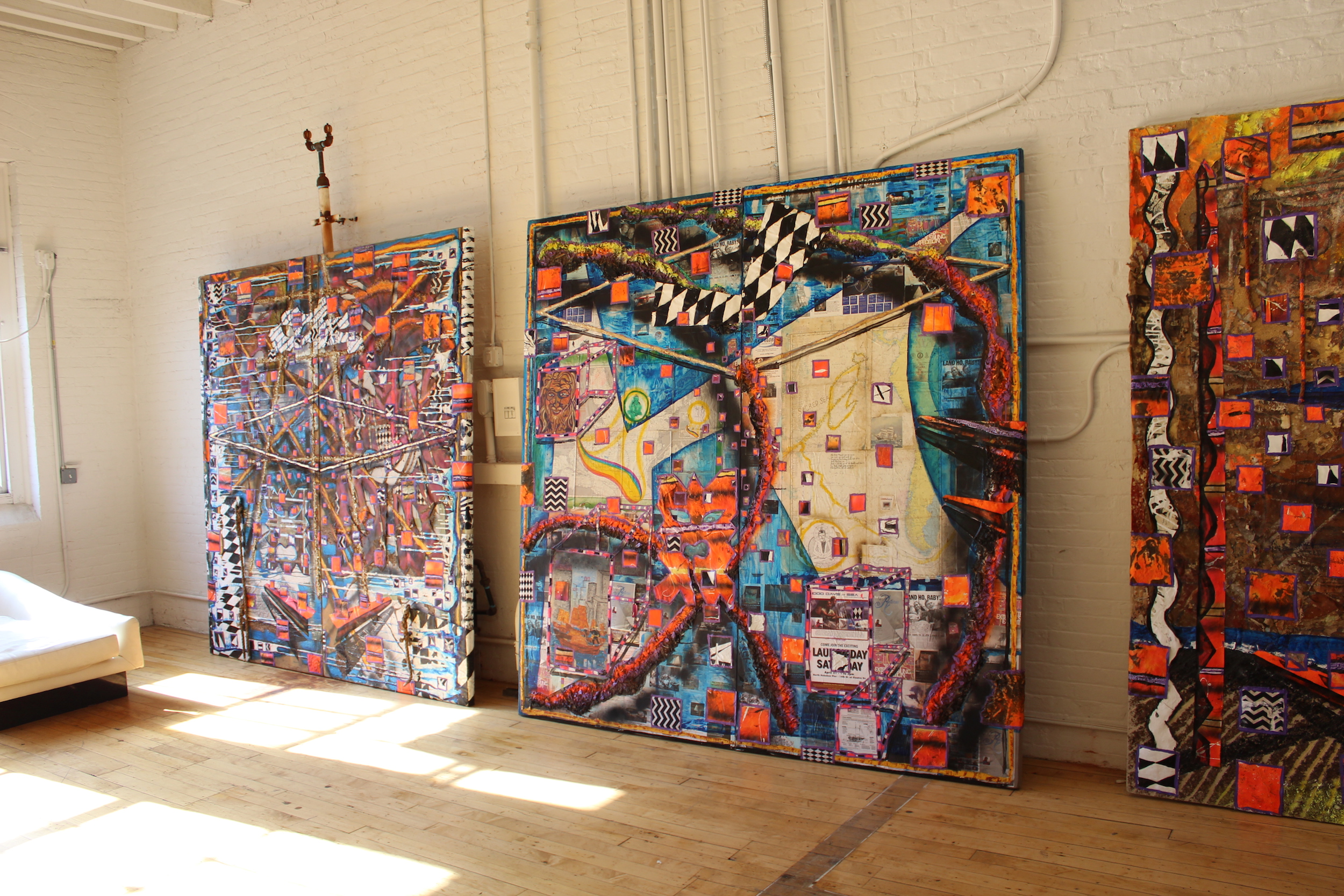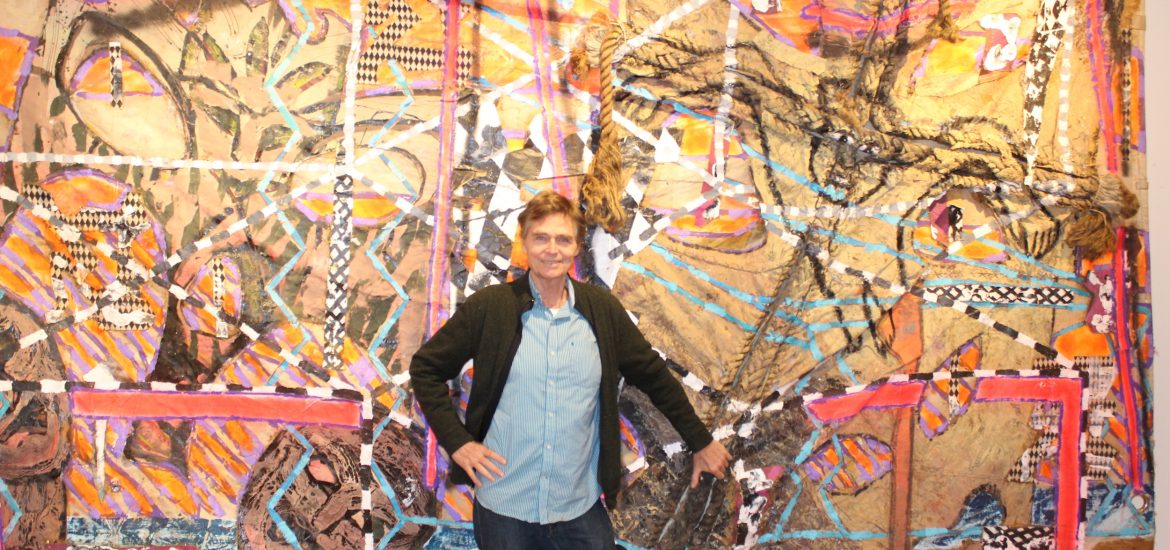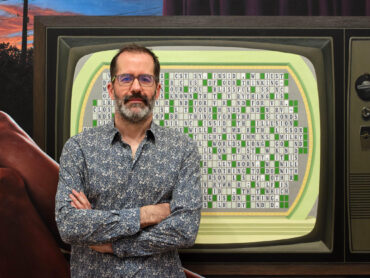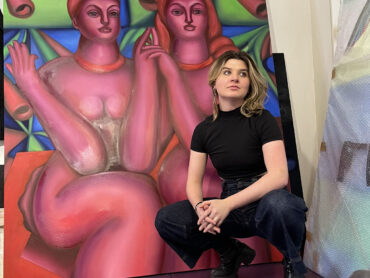“The sea is full of life, but it is death for humans. It is good having this reminder of death always around because it reminds me of the impermanence of life on earth and it impresses on me that the world of God is real.” —Reid Stowe
Imagine sustaining yourself on mung bean sprouts and fish while at sea for over three years on a 70’ sailboat hewn with your own hands. You take it upon yourself to simulate a mission to Mars in order to better comprehend the physiological effects of not touching land for such a great extent of time. Imagine meditating to the Green Goddess for protection because while at sea, with no land in sight, solo, headed on a fast path to enlightenment because out there there’s no room for mistakes. You prove to yourself over-and-over again how Tantric Buddhism’s mantras and spiritual practices that you’ve trained and disciplined in for years are now not only serving and protecting your body, speech, and mind heroically well during storms in pitch-black darkness but is purposefully keeping you alive and steady. At the same time, elevating your consciousness for when the sky does finally break and you’re reminded undoubtedly there is nothing but ‘water, water everywhere’ surrounding you for days on end and you know full well that without this deep belief in a higher deity and the ritual of meditation you’d be sailing into the abyss of insanity. Imagine having your portrait painted by Basquiat in St. Bart’s in 1985. That’s where you both first met and he loved your island studio and wanted to paint you and he—in his ‘radiant’ gratitude for sharing your paints and studio—gives you the portrait in return. Imagine during this same time when St. Bart’s was home and loading-up your sailboat with tons (literally) of marijuana headed for America was as casual and ordinary as surf sessions with Julian Schnabel; because drug-running, like surfing, is what you did when not painting or sailing. The downside of this balancing act was getting caught with bushels of fresh Colombian herb packed to the gills in your ship’s hull in the mid 90’s and then having to sell your Basquiat painting to Tony Shafrazzi’s cousin to pay your lawyer who happened to be strolling down a NYC street with your friend Anthony Haden-Guest when you called him for help from jail. Imagine spending 20 or 30 years on a single painting done on sails that were stitched together by hand, yours, and where the vibrations of the sea still hum in the very weathered stitching, sails, cleats, and ropes—all props in which to make art—from your epic journey around the world and back and because as a mystic—yes, you are one—there is no other way to paint “the universe and everything in it.” Imagine for a moment being on a truly epic adventure, over one-thousand days at sea, the longest sea voyage in history, and painting to live about it.

Whale Course Diptych
Welcome to the fantastical world of American artist and sailor extraordinaire, Reid Stowe (b. January 6, 1952), an ingenious gentleman for whom the sea is his Absinthe. ‘A life at sea’, says Reid, ‘invites absorption and meditation lending unlimited scope to the imagination.’ Mr. Reid views sailing, especially his many long-days-alone-at-sea as high-performance art vis-à-vis spiritual and physical enlightenment. For him, the physical act of being and making art is as sacred and as profound as the depths of the sea itself. The global journeys aboard his ship Anne where much of the art-making process begins and is sorted out becomes, therefore, not just a means to an end but a conduit to a means. A way to achieve higher consciousness in an environment burdened with constant fear (being capsized, getting sick or hurt which can lead to death) in order to allow those situations—coupled with absolute isolation—to foster the imagination to run wild and open up like a Lambo on a deserted highway. Think tribal rituals before sacrificial offerings. It is indeed the ultimate opportunity to delve into the subconscious and, perhaps, into an even deeper place where God is revealed. With an average of thirty-one thousand waves a day (yes, he counted) rocking Mr. Reid’s boat back and forth, up and down, and at times, over and under, a little touch of divinity can go a long way. Sailing for Reid isn’t about traveling from point A to point B. It’s about shining a light on man’s maximum capabilities, unraveling and testing his almighty potential—a means to achieve sublime heights of enlightenment, spirituality, and clarity which can then be channeled into the process of creation and, hopefully, as the ultimate end result, revealed so that others are illuminated to the sanctity of life and the divine. For Mr. Stowe, art is an elixir meant to alleviate earthly pains and elevate spiritual awareness.

Mars Ocean Odyssey
William Reid Stowe grew up sailing along the Eastern seaboard from his home in Ocean Isle Beach, North Carolina. He enjoyed building his own boats and by his mid 20’s sailed both the Atlantic and Pacific oceans. He sailed to Antarctic in 1986 and in1999 completed a 194-day journey without touching land on an expedition called “The Odyssey of the Sea Turtle”. Here, Reid would take conceptual art to new heights and be the first to use GPS as a drawing tool after charting a 5,500 mile circumference in the South Atlantic sea in the shape of an enormous sea turtle, a gesture to Aesop’s fable, “The Tortoise and the Hare” and Reid’s reminder to take it slowly but surely in this short life instead of rashly and quickly. “Possibly the largest artwork ever created”, says the now 67-years-young artist. But all of this was mere practice and planning for a quixotic journey he began concocting as a young man back on his small, 26-foot catamaran: to venture on what would be billed as the longest continuous sea voyage in the history of mankind without resupply or stepping on land. By 1997, Reid was promoting this insanely epic idea as 1000 Days at Sea: The Mars Ocean Odyssey. He had postulated in a paper titled One Thousand Days Non-Stop at Sea—Lessons for a Mission to Mars, co-authored with writer Albert A. Harrison, that the conditions of confinement and isolation experienced during extended sea voyages would mimic to some degree those any astronaut would experience for a Mars voyage. In essence, Reid was trying to alert the Science community that he was the ideal type of specimen (in body, mind and ,spirit) that would make for the perfect astronaut to endure such a harrowing and long trip to a planet 140 million miles away and that would require at a minimum 150-300 days to complete. Many thought Mr. Stowe nuts. Even the famed Naval Officer and deep-sea explorer, Robert Ballard, who discovered the Titanic thought Reid’s ocean journey an impossible dream.

Sail Painting
But on April 21, 2007, from the 12th St. Pier in Hoboken, New Jersey, Reid Stowe, with a hull now packed with sprouts, water, dried goods and even pasta, tomato sauce and olive oils provided by his friends at Cipriani’s, embarked on his quest that would last a resounding 1,152 days and take him thousands of nautical miles around the globe before returning safely, and sanely, to the Hudson River on June 17th, 2010. A small and fascinating antidote to this story is that Reid’s Dulcinea, Soanya Ahmad, accompanied him on the first 306 days of the journey but had to disembark due to—what was later discovered to be—morning sickness. Members of the Royal Perth Yacht Club, including yachtsman, Jon Sanders, a previous record holder for longest time solo at sea, assisted in bringing Ms. Ahmad back to terra firma while Reid continued on his mission, alone. In July 2008, with Reid still out at sea, Soanya gave birth to their son, Darshen whom Reid would see for the first time as a two-year-old on his eventual and triumphant return. Many in the sailing community who had followed his progress online thought Mr. Reid selfish and lambasted his decision to carry on while his wife was carrying child. In truth, Reid’s life as an artist in search his destiny is reminiscent of Siddhārtha Gautama’s epic trials and tribulations away from his wife and son for six years before awakening and returning home to them with full Buddha status. Or when soldiers deploy into the enemy fire for eighteen months as their little ones are learning to walk and talk without them. Reid’s journey was tantamount to the landing on the moon. And his determination to follow through regardless of setbacks and or unforeseen circumstances (rogue waves turning over the boat, torn sails in need of emergency stitching, de-salinization machine breaking down, running out of fresh water, getting sideswiped by a cargo ship, losing the ability to navigate against the wind, or when the First Mate abandons ship to give birth), begs anyone searching on their own path to ask: How bad do we really want the thing we set our sights on? How much are we willing to endure to turn a crazy idea into reality?

Two spiritual Self Portraits
At the Paul Calendrillo Gallery in Chelsea, New York, where Mr. Stowe’s large-scale paintings were on display this past October, it was apparent to this writer that there was something special going on within the framework of the draped sails hanging about the gallery’s walls. Maybe it was the different dirt, soils, and woodchips he utilized in his work, earthly elements that he brought along on his journey and collected during all his previous years traveling (like orange dirt from Morocco) so he could smell them, touch them, and pour over his feet to keep his physiology in tune with the earth during the constant motions of the sea and that gave the paintings an alchemic element that—during opening night—drew the visitors near and, gasp, compelled many to touch the art. Maybe it’s Reid’s subtle use of black and white Op art meandering through colorful compositions that lend them an air of a long-lost blueprint, or a treasure map, to some magical destination than mere, unnavigable abstractions. Reid had stated that he’s “empowered by past sailors, visions of Odysseus” and he sees himself as “the most ancient man” constantly aware of “attracting the positive vibes and spirits of the sea” because “the sea is death for humans.” With Whale Tooth Sailor, a nine by eleven foot painting on an antique sail from the famed, hundred year old, four-masted barque Peking (salvaged from the dustbins of history), Reid Stowe captures the prowess of his vision and the gravitas of his beliefs.

Reid explaining “Whale Tooth Sailor” to Gregory de la Haba
Impressive and awe-inspiring like the giant Moai stone sculptures found on Easter Island, Whale Tooth Sailor consists of a massive totemic and alien-looking structure planted firmly at center on the hand-woven, cotton cloth sail. Around it the artist glued painted imagery of whale teeth, each approximately six inches in length, that lead the eye around and through the picture plane. A bright life-vest-orange sailing vessel, more makeshift raft than custom sailboat, is juxtaposed at its base and at a fraction of its size. As if to highlight the great odds against man and the universe, like the Starship Enterprise zooming light-years into the infinite galaxy—To boldly go where no man has gone before—Reid’s small ship is a metaphor, perhaps, for a journey set to begin for anyone willing to go the distance into the unknown. There is nothing foreboding about this journey, oddly, it appears familiar in its primitiveness, its primordial aspect comforts us and the weathered, hand-stiched weaves, again, make us want to feel the work as much as we’re obliged to look at it. Reid’s paintings are masterfully tactile and that human element allows for us a moment to ponder the origins of man, our common ancestry, and from whence we all came, the sea. This is a work symbolic of man’s place in the world, small yet with infinite potential. Get close to the work and you might hear wind hitting off the sail or reggae legend Peter Tosh singing:
“Man of the past
And I’m livin’ the present
And I’m walking in the future
I’m just a mystic man
Got to be a mystic man”
Whale Tooth Sailor is where you’ll feel hundreds of years of picture-making journeying across the globe on the high seas and coming into a new modern port where Reid’s words, “the paintings are empowered with the magic of the voyage”, should be taken for face value. He’s a mystic man. —Gregory de la Haba

Three of Reids Works on Display in NYC






